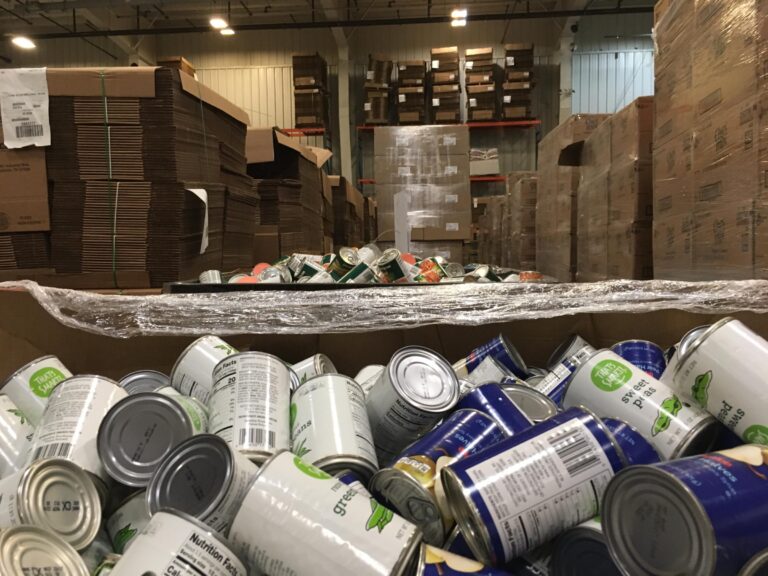As states like Kansas and Oklahoma let their emergency declarations run out, they effectively take a pass on extra federal help with food stamps.
Nearly one in five families struggled to afford food at the height of the pandemic. Supplemental Nutrition Assistance Program (SNAP) allotments were maxed out to reduce food insecurity.
But with increasing vaccination rates and a recovering economy, some states argue that they don’t need emergency declarations. That means SNAP payments fall to pre-pandemic levels. An average five-person household, for example, will lose $240 per month.
“Our families can’t go back to $40 a month. They can’t go back to $16 a month. They can’t go back to $70 a month,” says Melinda Craigs-Ingram, SNAP Outreach Manager for the Northern Illinois Food Bank. “It’s not enough to sustain their families over a full calendar month.”
She says Illinois has no timeline to end its emergency declaration, but she’s already working to prepare poor families for the loss of additional aid by distributing flyers, advertising on state websites and spreading information by word of mouth.
“It’s absolutely a concern of ours,” she says.
Last week in Kansas, Republican leaders blocked Gov. Laura Kelly’s request to extend the state’s emergency declaration. That meant thousands of Kansans will lose out on the expanded benefits, which raised the average monthly SNAP payment from $106 per person in February 2020 to $193 per person in May 2021.
Oklahoma Gov. Kevin Stitt announced he was ending the state’s emergency declaration in early May. He cited an increase in vaccination rates and improving unemployment numbers.
But anti-hunger advocates have since spoken out against the governor’s decision, saying that thousands of Oklahomans could lose out on SNAP benefits.
The emergency declaration expirations come at a time when global food prices are at their highest in a decade, according to the United Nations.
In the U.S., cereal and bakery items are up 5%, fruit and vegetables are up 1% and dairy products are up 0.6%, according to the National Bureau of Labor Statistics.
And while some states argue their economies are recovering from the pandemic, Craigs-Ingram says with national unemployment numbers still so high, decreased benefits will be a shock to many SNAP recipients.
“It causes another level of stress and anxiety for our families, because now they’re saying, you know, ‘I haven’t gotten back to work. I’m not on my feet. I haven’t found … a job that would pay me a living wage to take care of my family, and what do I do?’” she says.
It took between three and five years for the economy to bounce back from the last recession, she says, and this recovery will likely follow a similar timeline.
However, she says maintaining expanded SNAP benefits could help accelerate that timeline. Studies show that SNAP is an economic multiplier, and that for every dollar invested in the program, the national Gross Domestic Product (GDP) increases by between $0.80 and $1.50.
Craigs-Ingram says many of her constituents have become accustomed to utilizing the extra benefits, and once the state’s emergency declarations expire, they’ll have to “go back to trying to figure out, ‘OK, how much meat can I buy in a calendar month and how much fruit and vegetables can I get and how much protein can I get?’”
“It’s going to be a huge shock to our families.”
Follow Dana on Twitter @DanaHCronin
9(MDM5MjE5NTg1MDE1Mjk1MTM5NjlkMzI1ZQ000))

